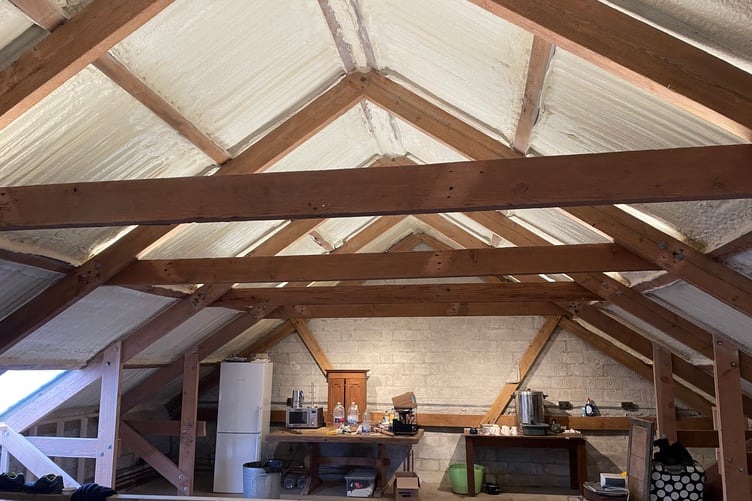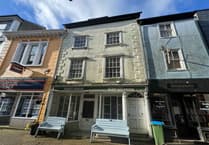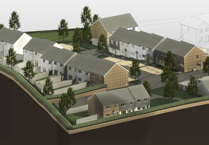EACH week, hundreds of planning applications come before Cornwall Council’s planning department, seeking to win approval for various plans right across the Duchy.
These plans can comprise of a number of different reasonings– ranging from permission to replace windows or listed building consent ranging up to large house building developments or changing of use of a building, for instance, from an office to a café, or flats.
Within this large and often complex system, there are a number of formats from which planning advice and approval can be sought.
These range from full applications where all the details which comprise a proposed development or work to a building are submitted, to outline applications, where further details are yet to be confirmed, for example, an outline application with reserved matters for appearance may not confirm the final proposed development but rather seek permission in principle.
An example of this is one for an outline permission for 20 dwellings on land with reserved matters for appearance and scale; the reserved matters would require further permission later for their inclusion.
Other types of applications include pre-application advice requests, where would-be developers submit often outline proposals to a local authority to ascertain whether it is likely to gain support or not prior to submitting a planning application.
The vast majority of applications are decided by planning officers employed by a local authority under ‘delegated powers’, meaning they do so on behalf of their employer, however, some applications are ‘called in’ by local councillors to be discussed at an area’s strategic planning committee meeting, meaning the final decision rests with a committee of councillors.
Retrospective conversion of barn met with objections
A PART retrospective planning application for the change of use of an agricultural storage building to a ‘C3 dwelling house’ could face refusal after strong objections were made to the application.
Mr Roger Spurrell has applied to Cornwall Council’s planning department seeking permission to undertake the works to change the use of the building on land to the South East of Jollibrook Barn, Temple, Bodmin.
It is a part-retrospective application meaning that work towards the proposals has already begun but has not yet been completed.
Mr Spurrell told the council: “The application before you is a retrospective planning application under policy seven of the Cornwall local plan. The historic building was once an engine shed for the adjacent clay works.
“The property was then rented to our applicant’s father from 1950 for which the building was used for agricultural use. The applicant has fond memories of playing in the barn as a child while his father undertook work in the barn. When the barn became available for purchase in 1979 the applicant purchased the barn and has used it ever since for agriculture and storage.
“The Spurrell family has a long association with the area, originally as the owners of Merrifield Farm in Temple. Roger’s father was a stalwart of the community acting as the church warden and as the chairman of the Bodmin Moor Commoners. Through illness, the family was forced to sell the main farm, with the application site and an agricultural holding (detached and without dwelling) being the only remaining ownership on the moor.
“In 2021 the applicant in his retirement has sought to create a first floor in the barn and to create a one bedroom living accommodation above a retained use of agriculture. The applicant is looking to establish an agrarian lifestyle where animals and a farming store are retained on the ground floor and where he would live on the first floor above. There is a historic way of living in the UK and the way in which the applicant would seek to live out his retirement.
“The applicant was not aware that he needed formal planning for the works he has undertaken to date and now seeks to submit a full and detailed application for the building.
“The proposal seeks to create living accommodation above the animal and machinery store through the introduction of a first floor. To achieve this accommodation there are not any alterations to the external envelope of the building. The applicant is only seeking a studio apartment for his personal use. This is a very light touch conversion. There is no change to the amount of build form in terms of mass, volume or scale.”
However, it has been met with objections, from the Cornwall National Landscape (formerly AONB), Blisland Parish Council and more unusually, the owner of the common moor grazing rights.
Blisland Parish Council stated: “In concurrence with the strong objection from the Cornwall AONB, Blisland Parish Council also objects to their application.
“Blisland NDP Policy 8 - Landscape Character states that proposals for development must, where appropriate, demonstrate that they would not detract from, or have an adverse impact on, the landscape character of the parish that is defined in both the Cornwall Council Landscape Character Assessment for Bodmin Moor and in the Blisland Local Landscape Character Assessment.
“The domestication of the barn will detract from the sense of place in this relatively isolated and sensitive location. The skylights would also add to the light spill in an otherwise unlit area, in contravention of NDP Policy 9 on Dark Skies.
“The property does not have land on which to keep stock, so dual agricultural/domestic use as outlined in the application does not seem tenable.”
In their objection, the Cornwall National Landscape office said: “You will be aware that we objected to the earlier withdrawn application PA19/08686 for the conversion of this concrete block construction barn to a dwelling house.
“The existing building comprises a modest block barn under a pitched corrugated roof set within the unenclosed ground at the edge of the lane running south-westwards from Temple Tor Farm to the A30. It is situated at the junction of the track providing access to Jollibrook Barn and its associated buildings.
“In its recent form the barn comprises a recognisable part of the agricultural/industrial landscape of Bodmin Moor. Its modest form and materials allow it to be an unremarkable built form comfortably accommodated in its setting.
“The proposal to convert this simple, functional, utilitarian building to a residential dwelling will fundamentally alter its existing character and appearance.”
The owners of Cardinham Moor, Mr Rupert & Mrs Francesca Hanbury-Tenison lodged an objection on the basis of the proposed location not having moorland access rights: “I am the landowner of Cardinham Moor, described as the "adjacent moorland" in section 4.2 of the Design and Access statement.
“I am also chair of the Natural England High Level stewardship scheme that manages the grazing on the common.
“Cardinham Moor is a privately owned agricultural common. Only those with specific commons rights in the commons register may graze a specific number of specific animals on the common.
“I must lodge an objection with reference to the Design and Access Statement section 4.2:"Within this open plan area the applicant will seek to keep the relevant equipment to allow for his farming endeavours as well as his animals when there is severe weather - otherwise the animals will roam the adjacent moorland."
“There are no commons rights attached to the property, so the applicant does not have the right to turn out any animals onto Cardinham Moor (the adjacent moorland).
Any animal that is turned onto the common with no legal right to be there will be removed.”
The plans can be viewed using reference PA24/03077 on the Cornwall Council planning portal.
Keep up to date with the latest planning applications and other statutory notices (such as alcohol licensing and probates) that affect where you live by visiting our online Public Notice Portal – be the first to know by visiting www.publicnoticeportal.uk/cornish-times-series.




.png?width=209&height=140&crop=209:145,smart&quality=75)
Comments
This article has no comments yet. Be the first to leave a comment.